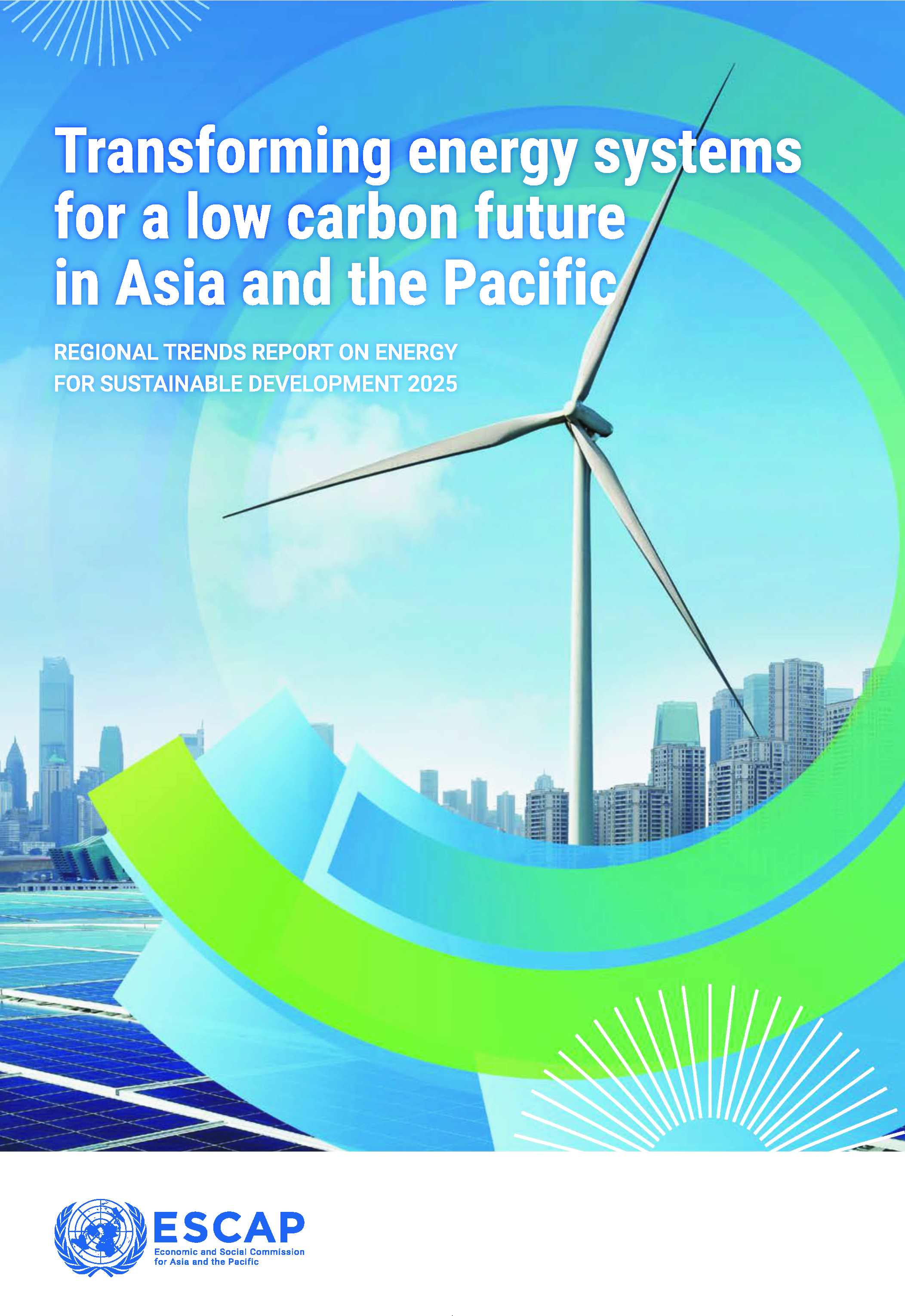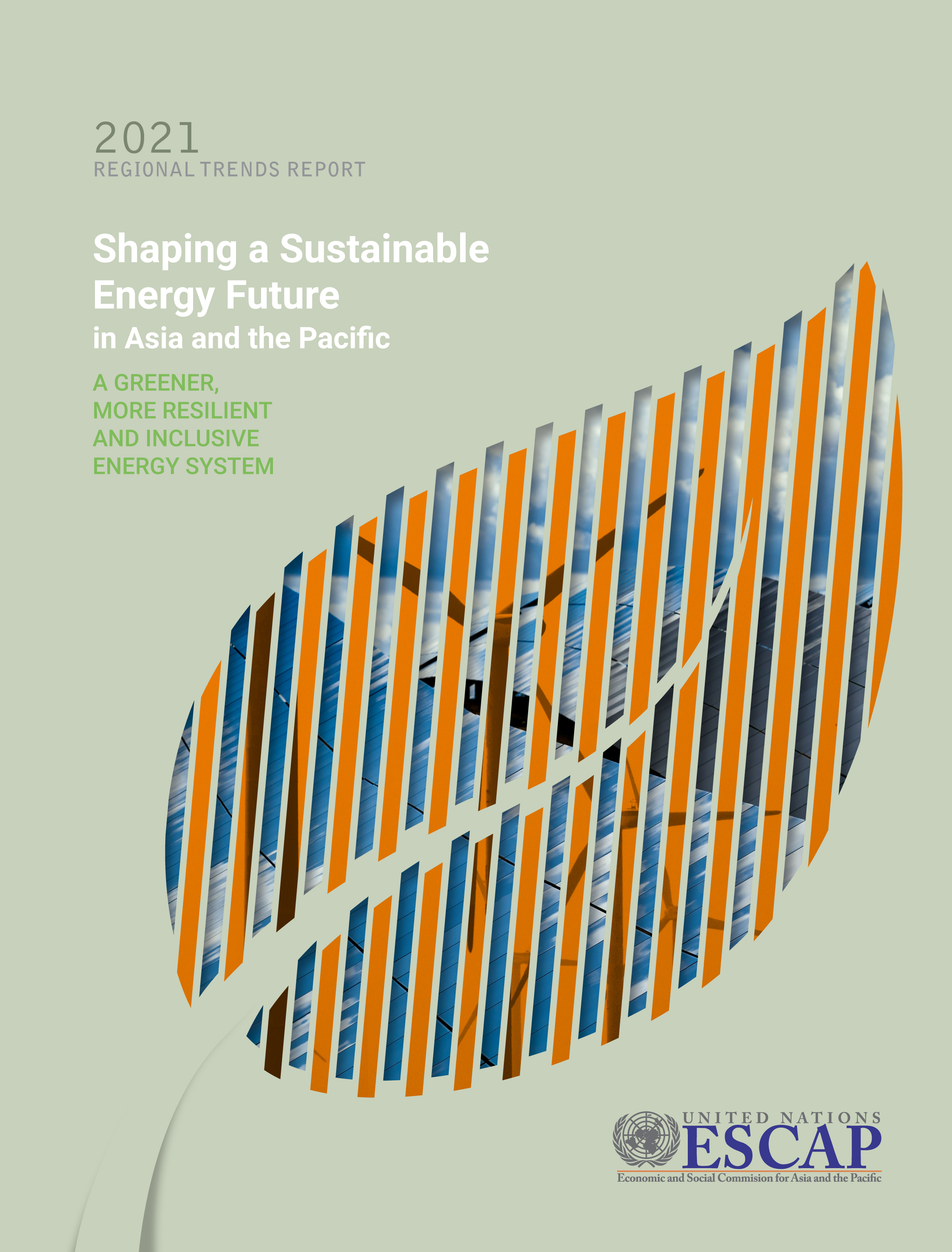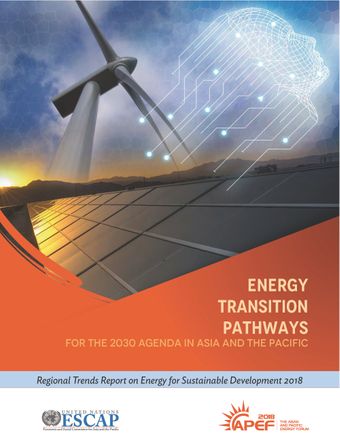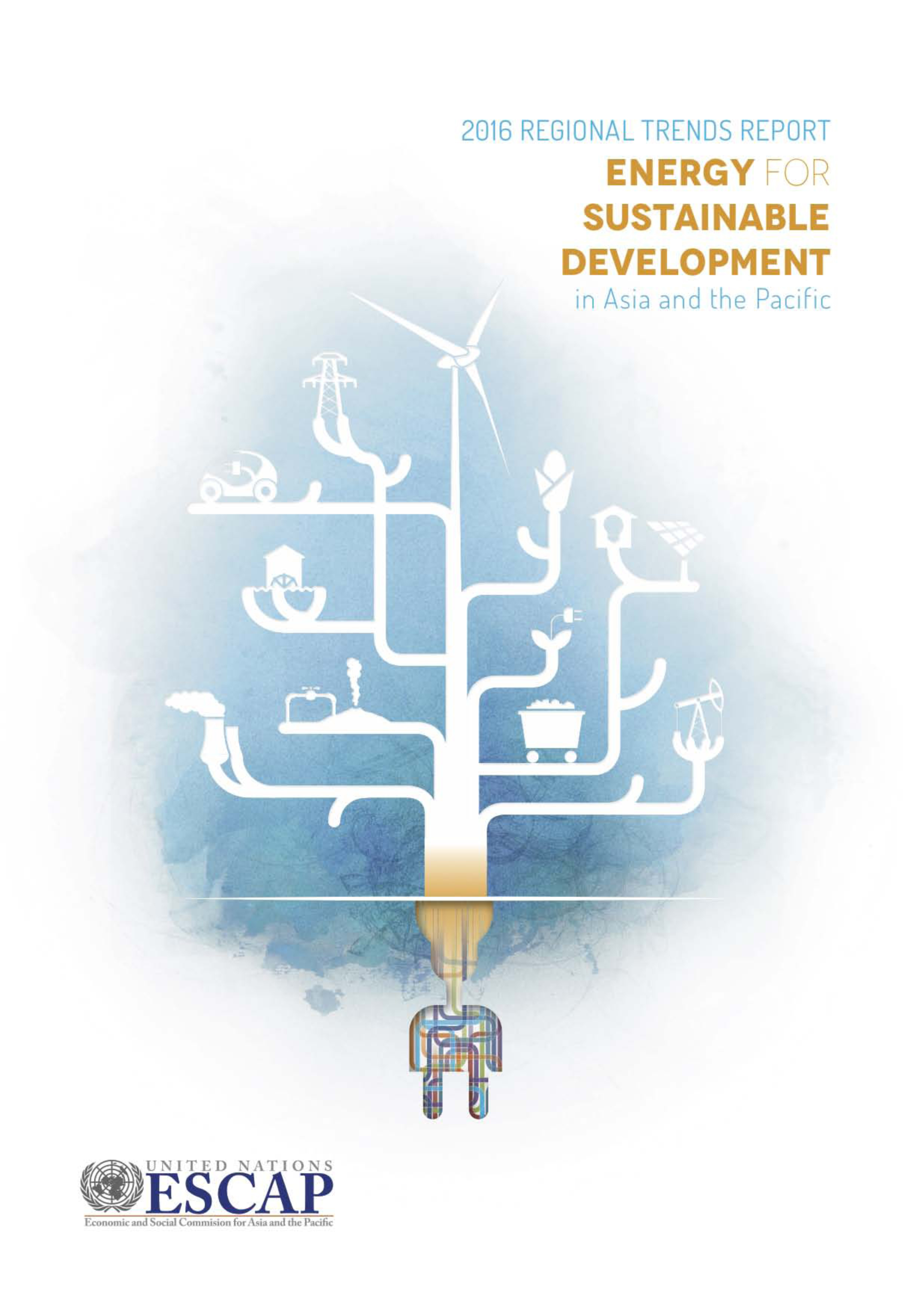Regional Trends Report on Energy for Sustainable Development
Filter :
Sustainable Development Goals
Subject
Publication date

Regional Trends Report on Energy for Sustainable Development 2025
Transforming Energy Systems for a Low Carbon Future in Asia and the Pacific
The 2025 Regional Trends Report on Energy for Sustainable Development: Transforming Energy Systems for a Low Carbon Future in Asia and the Pacific offers an extensive analysis of the region’s progress and challenges in moving towards a low carbon energy future. It examines, in detail, the region’s progress in achieving Sustainable Development Goal 7 (SDG 7: Affordable and Clean Energy) and in advancing the just energy transition. Despite significant progress in electricity access across nearly all countries in the region and with many national examples of accelerated renewable energy deployment, challenges exist, particularly in achieving universal access to clean cooking and improving energy efficiency. A just, equitable and inclusive transition necessitates accelerated action by governments, substantial investments and enhanced regional collaboration. To support the realization of a low-carbon future, the recommendations of this report are aligned with the outcomes of COP28, where countries committed to tripling renewable energy capacity and doubling energy efficiency improvement rates by 2030. The Asia-Pacific region plays a critical role in achieving these global targets, as it is home to over 4.3 billion people and consumes more than half of the world’s energy.

Regional Trends Report on Energy for Sustainable Development 2023
Closing the Gap for SDG 7 in the Asia-Pacific Region
The achievement of Sustainable Development Goal 7 (SDG 7) – ensuring access to affordable, reliable, sustainable, and modern energy for all by 2030 – is challenging for the region. The objective of this report is to examine the progress made by Asia-Pacific countries towards achieving SDG 7 in the decade of action on the SDGs. In it, key energy trends are examined, immediate challenges are reviewed and the preparation of more ambitious agendas towards net-zero emissions are assessed to give recommendations of the steps needed to be taken by stakeholders and policymakers to achieve the goal of access to affordable, reliable, sustainable, and modern energy for all.

Regional Trends Report 2022
Towards Sustainable Energy Connectivity in Asia and the Pacific: Status, Trends and Opportunities
Sustainable Development Goal 7 (SDG 7) targets universal access to energy, an increased share of renewable energy in the global energy mix, and doubling the rate of energy efficiency improvement. While the Asia-Pacific region has made considerable progress in meeting SDG 7 targets, much more work needs to be done if the region is to achieve the 2030 Agenda. Deployment of renewable energy and complementary technologies like energy efficiency, battery storage and, in particular, grids must increase significantly if the SDG 7 targets are to be met. However, there are many positive signs that suggest the transition to clean energy is accelerating. Renewable energy is more cost-competitive than ever, especially compared with the relatively high cost of oil, natural gas and coal, and these technologies are increasingly being recognized as contributors to energy security. The focus of this Regional Trends Report 2022 is on one strategy that can enable a more rapid, more secure and more affordable transition to clean energy, i.e., power system connectivity. Energy connectivity supports the integration of variable renewables, and enables access to a more diverse and lower cost set of resources. This strategy is widely recognized, including by ESCAP member States, which in 2021 endorsed the “Regional Road Map on Power System Connectivity”. The vision, principles and nine strategies detailed in that document have guided the development of this report. Accelerating progress on power system connectivity can, in turn, accelerate the energy transition. ESCAP will continue to work with stakeholders in the region and its member States to implement the Road Map strategies, and enable more secure, more efficient and more sustainable connectivity in the region. This report will provide a useful set of case studies and recommendations for enhancing policies in support of power system connectivity and the energy transition.

Regional Trends Report 2021
Shaping a Sustainable Energy Future in Asia and the Pacific - A Greener, More Resilient and Inclusive Energy System

Regional Energy Trends Report 2020
Tracking SDG 7 in the ASEAN Region
Meeting the ASEAN’s rapid rising energy demand is challenging policymakers while they have tried to balance commitments to global, regional and national agendas on climate change and sustainable energy. Decisive action by the region’s policymakers is needed in order to transition and expand energy systems to sustainably and equitably deliver modern energy services. In support of knowledge-sharing among Member States, this publication not only provides an overview of progress towards global SDG 7 targets and regional targets under the ASEAN framework, but also offers a country-by-country review of efforts under each of the major themes.

Energy Transition Pathways for the 2030 Agenda in Asia and the Pacific
Regional Trends Report on Energy for Sustainable Development 2018
The Asia and the Pacific region has become a global economic powerhouse. The region’s rapid and sustained economic growth, increasing population, expanding industrialisation and rapid urbanization are driving rapid growth in energy demand, which. Ensuring that supplies of energy are adequate to meet the growth in demand in ways that are socially, economically and environmentally responsible creates a new set of challenges for policymakers. The transition to 2030 energy pathway, which is aimed at addressing those challenges, has four coherent and interlinked objectives – increased energy supply to meet the growing demand, improved energy security, meeting the SDG7 targets and achieving NDCs. Addressing the complex and challenging task requires policymakers to develop a clear, sustainable and achievable pathway that would enable the countries, as well as the region as a whole, to achieve the 2030 goals and targets This report undertakes an in-depth analysis to first determine the level of achievement is possible under the current policy regime by developing a baseline. It then identifies the gap between the baseline and the 2030 targets to inform policymakers the additional efforts and resources that would be needed to adequately achieve SDG7 targets as well as the NDCs mitigation targets for the energy sector. Finally, different transition pathways have been developed and their socio-economic and environmental facets have been examined to assist policymakers to make an informed decision. The report also identifies the enabling policy, technology and market environment that would accelerate the achievement of the 2030 targets.

Regional Trends Report 2016
Energy for Sustainable Development in Asia and the Pacific
With energy demand in Asia and the Pacific forecast to increase by 60 per cent from 2010 to 2035, access to reliable and adequate energy services will remain a focus for decades to come. Countries in the region need to maximize their potential, improve energy access, increase shares of renewable energy, promote energy efficiency and strengthen cooperation on energy security and connectivity. The 2016 Report supports the implementation of the SDG7 and consists of two parts. Part I (Chapter 2) provides an overview of the implementation of areas of action. Part II (Chapters 3, 4, 5 and 6) discusses emerging energy issues in the global market and Asia-Pacific region.
